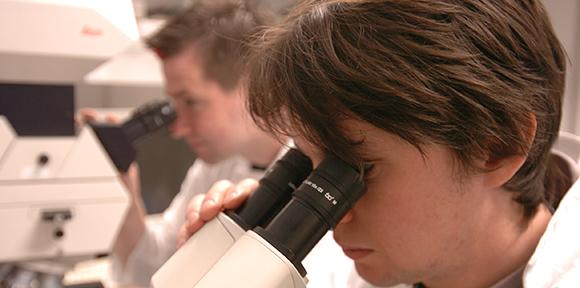
More than 2,400 items of equipment and 64 facilities have been added to the Cambridge Equipment Sharing Project Database since the scheme’s launch.
As as well equipment at Cambridge, the database provides access to 237 facilities across its partner institutions at Oxford, Imperial College London, UCL and Southampton, and the project is linked to the National Equipment Portal, which holds records of over 10,500 pieces of equipment across 43 UK institutions.
The project was set up in 2012 in response to changes in how research grants fund equipment.
“Funders expect equipment to be used more efficiently,” explained Dr Christopher Wilkinson, Cambridge Equipment Sharing Project Manager.
“Universities must check if there is an opportunity to share equipment with internal departments and other institutions prior to submission of grant applications.”
Open to all current members of staff, PhD, MRes and MPhil research students, the database is accessed via Raven log-in, and users coordinate agreements directly with equipment owners.
“Each record contains a detailed description of the item or facility, a photograph for reference, a contact name, email address, and telephone number, with details about the item’s availability and location,” he said.
The database is becoming increasingly popular, with the number of small research facilities listed doubling from 32 to 64 during the first half of 2015, and users are delighted with what it enables.
As well as helping individual researchers locate vital equipment, the database encourages collaboration at Cambridge and beyond, and highlights Cambridge’s commitment to sharing.
“That may be beneficial when grant applications are considered by research grant funders,” Wilkinson said. “Sharing also helps cut waste, reduce consumption and aid recycling, the University’s carbon footprint and legal compliance.”
The project is important for the University, too. It is proving useful to the Environment and Energy Section, which is keen to identify labs that could benefit by exchanging old freezer equipment for more energy efficient models under its free Freezer Exchange Programme.
And by knowing what equipment is available, the database makes it easier to plan research projects and helps students and researchers locate alternative sources should an item of equipment fail or become unavailable. It also provides greater transparency for publicly funded resources, and ensures that Cambridge is best placed to secure funding at a time of tightening research budgets.
Cambridge Equipment Sharing Project: www.equipment.admin.cam.ac.uk
National Equipment Sharing Portal: equipment.data.ac.uk
